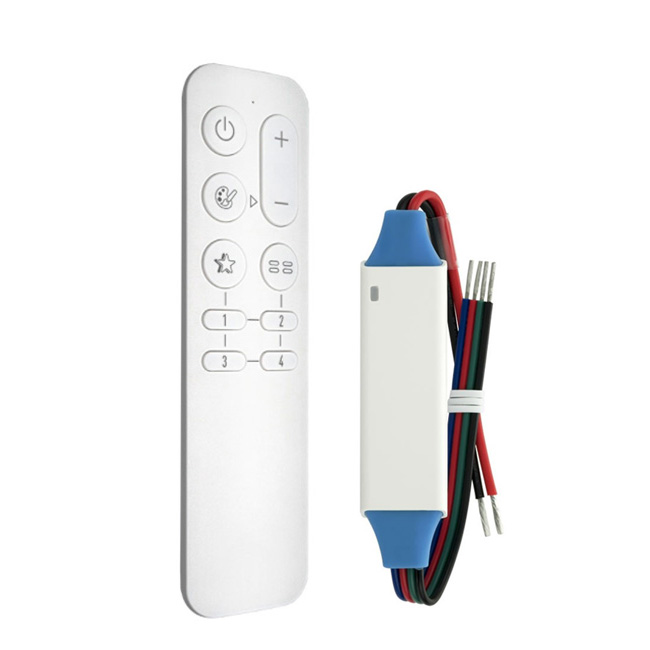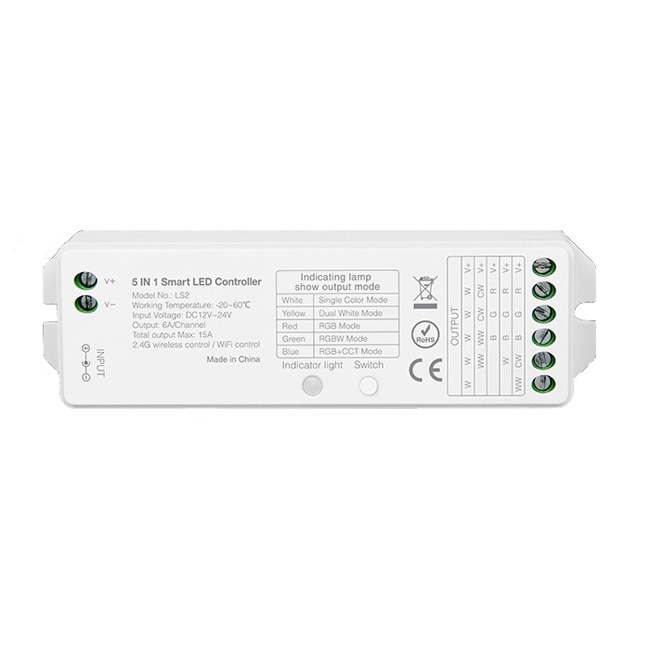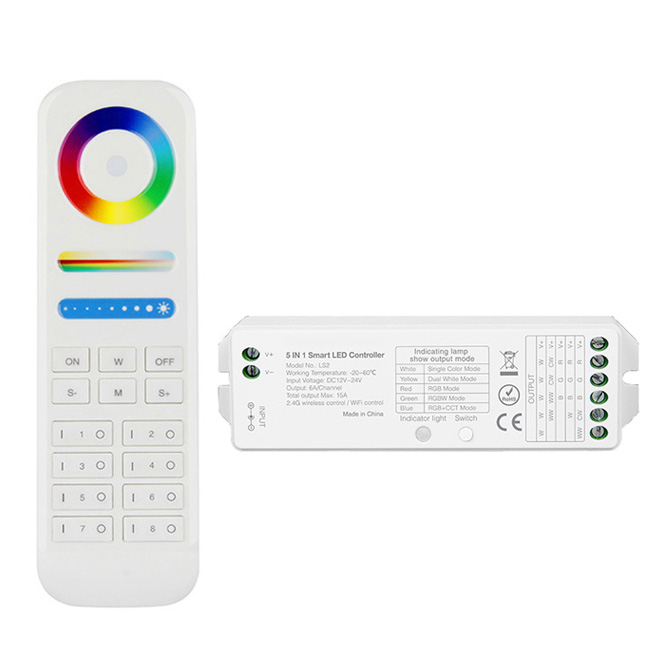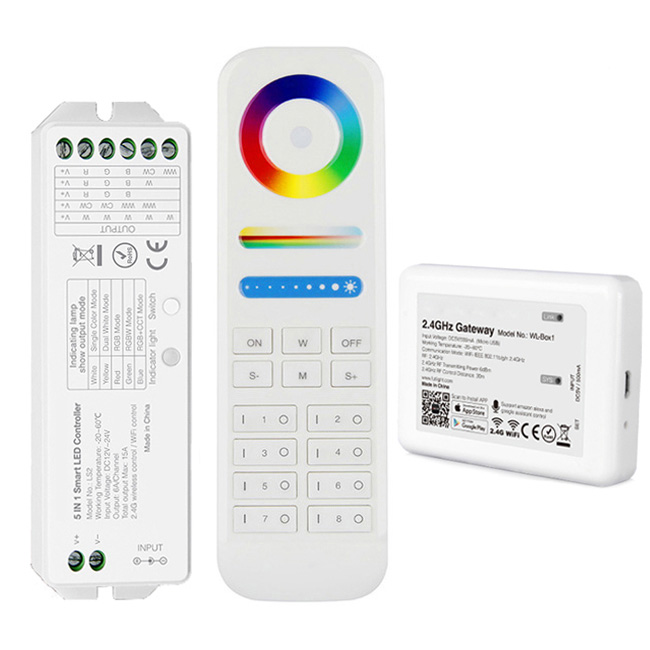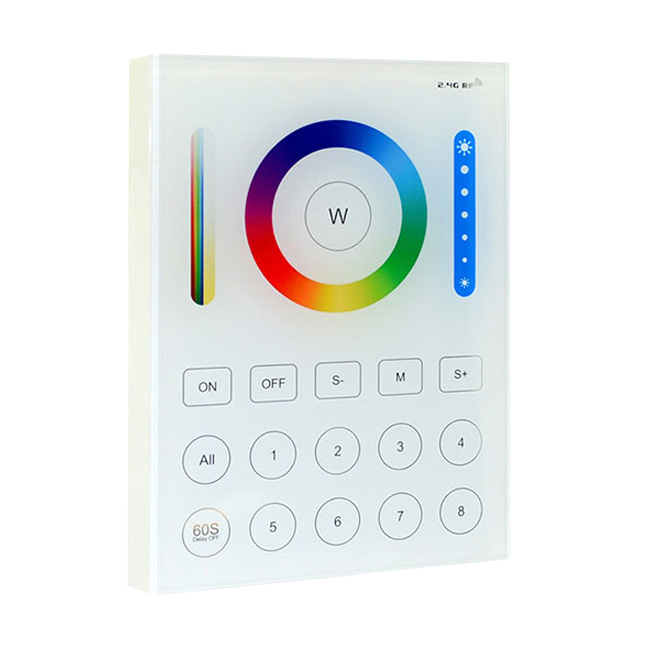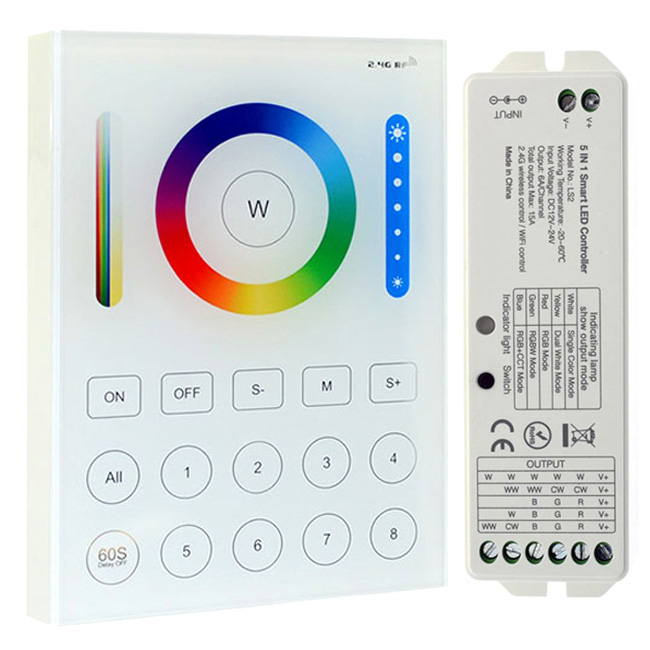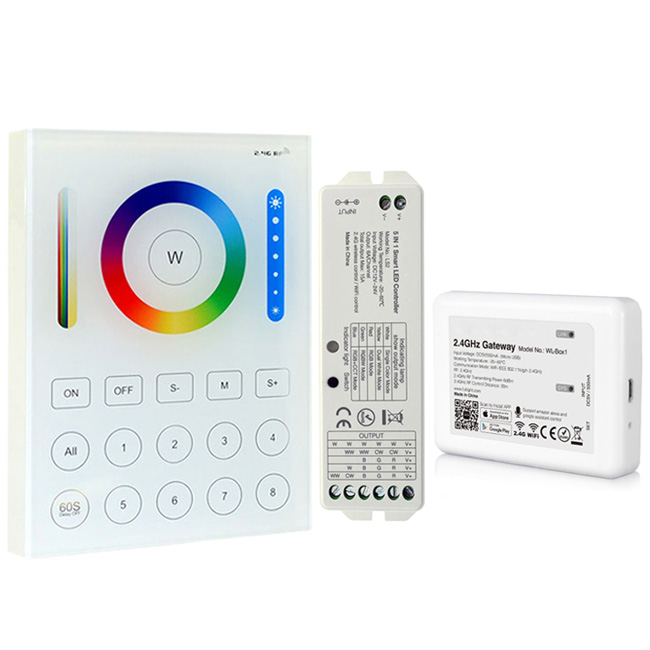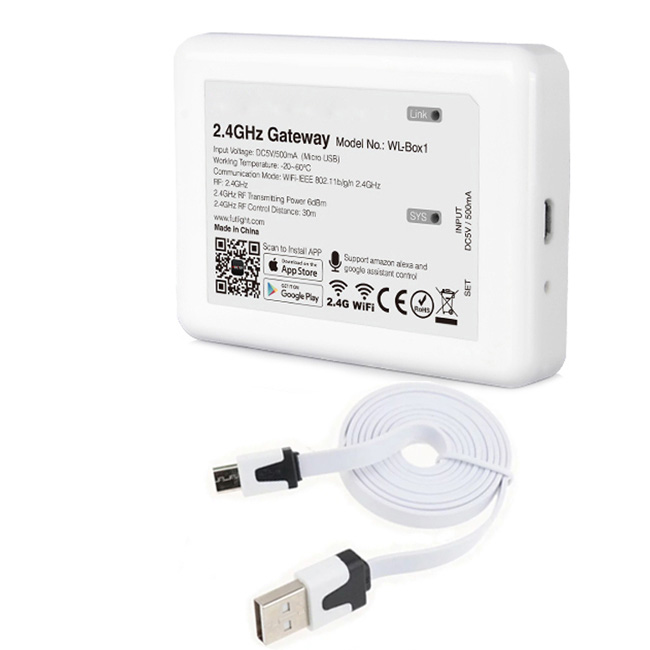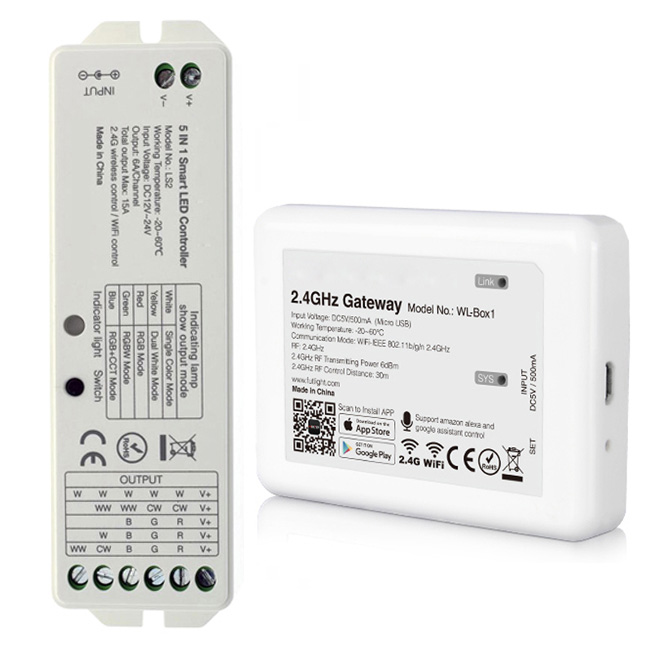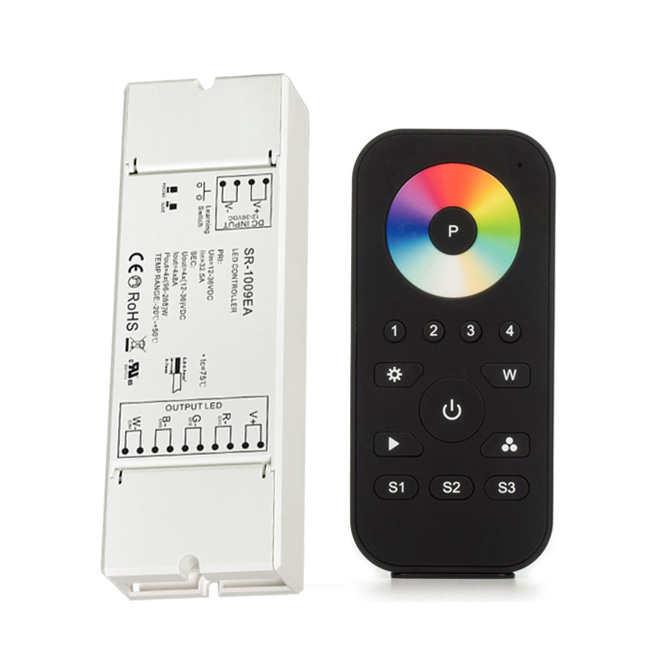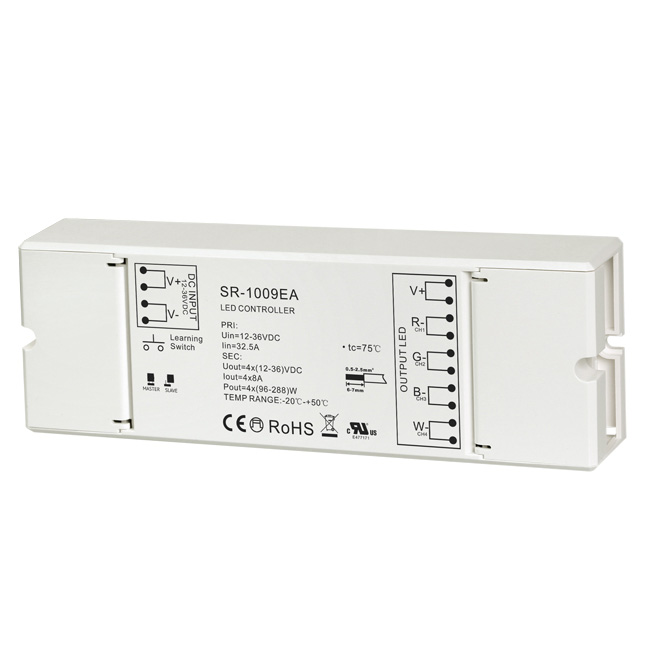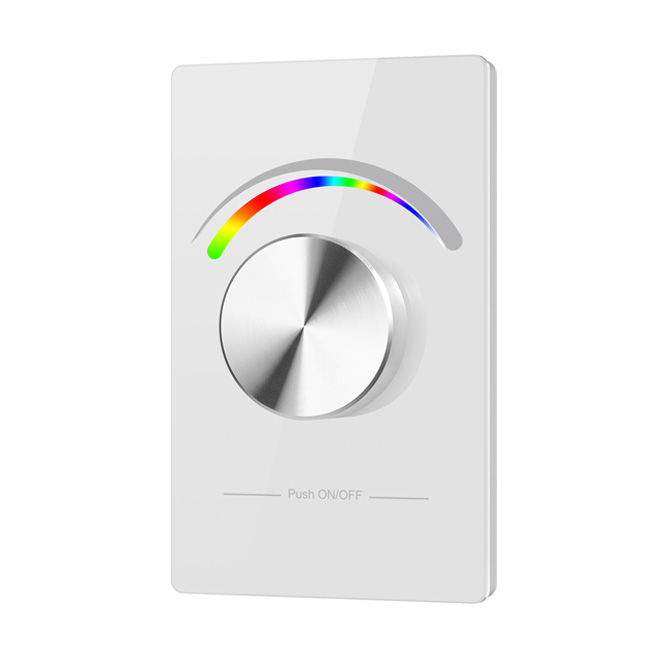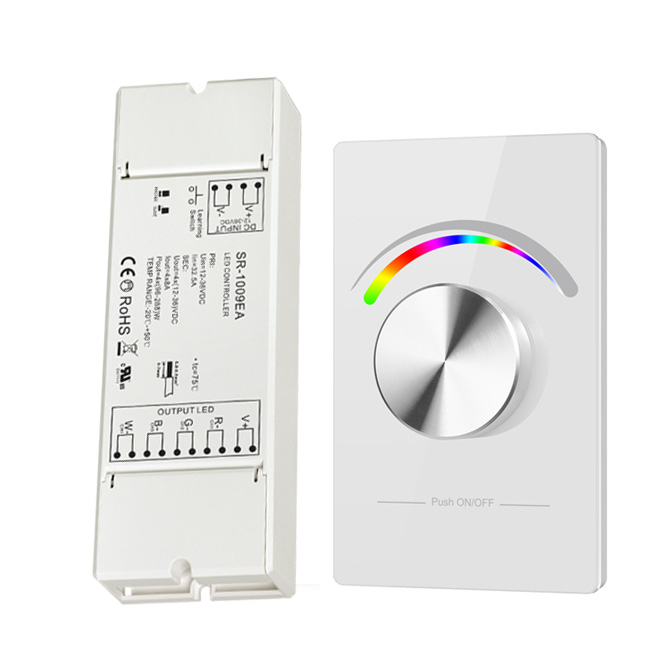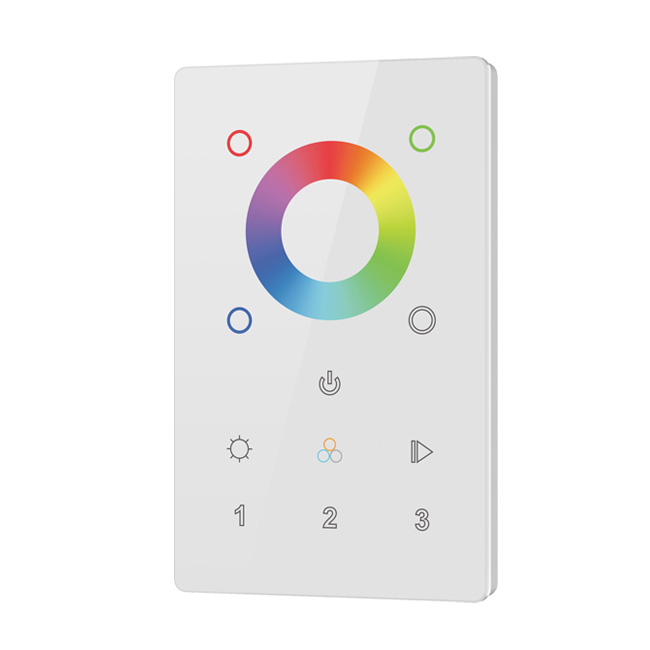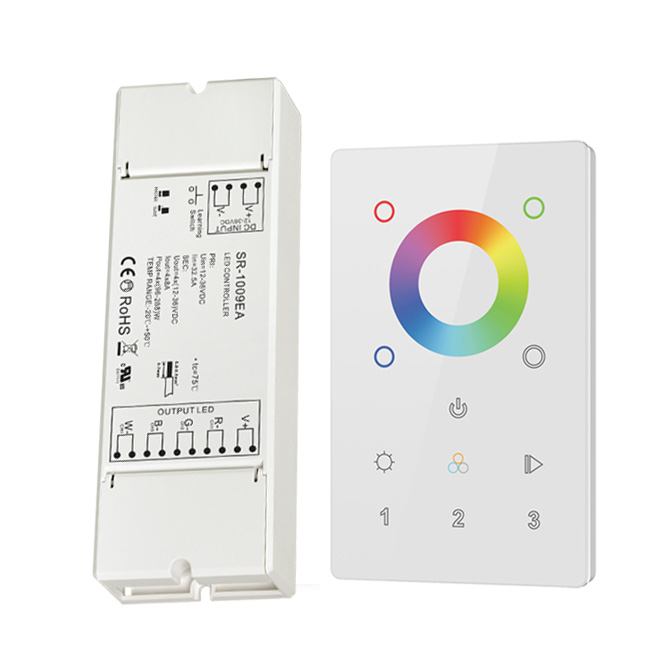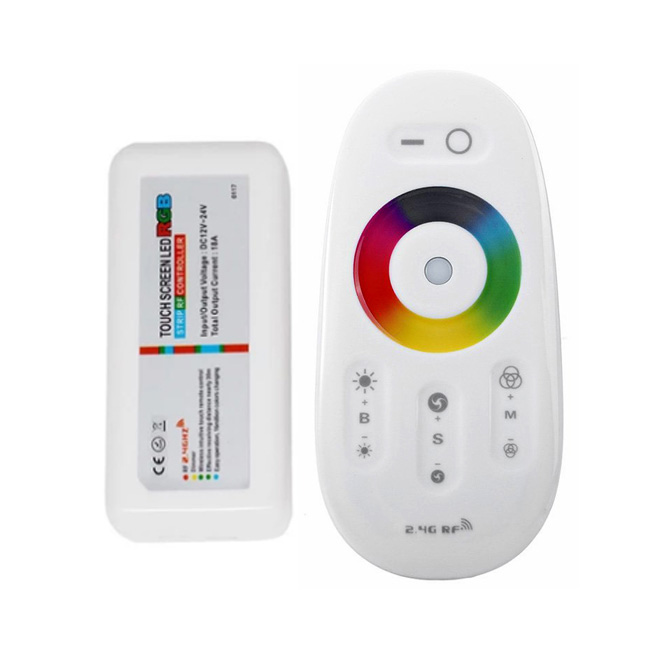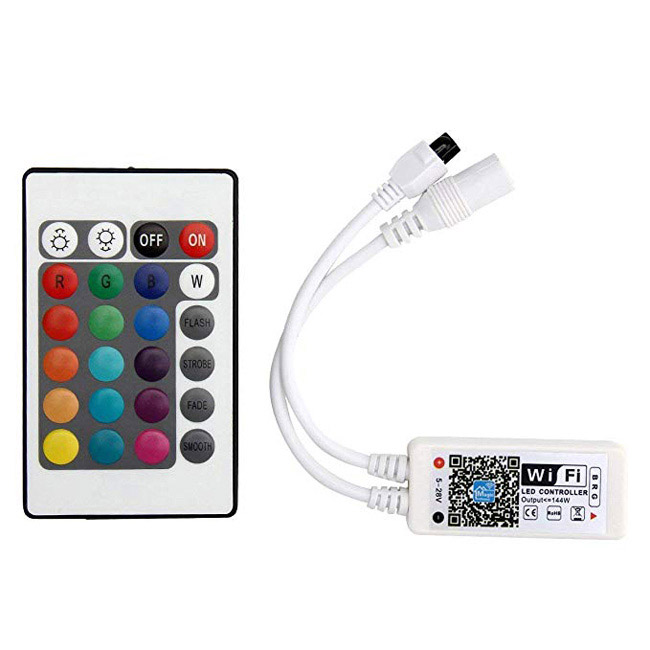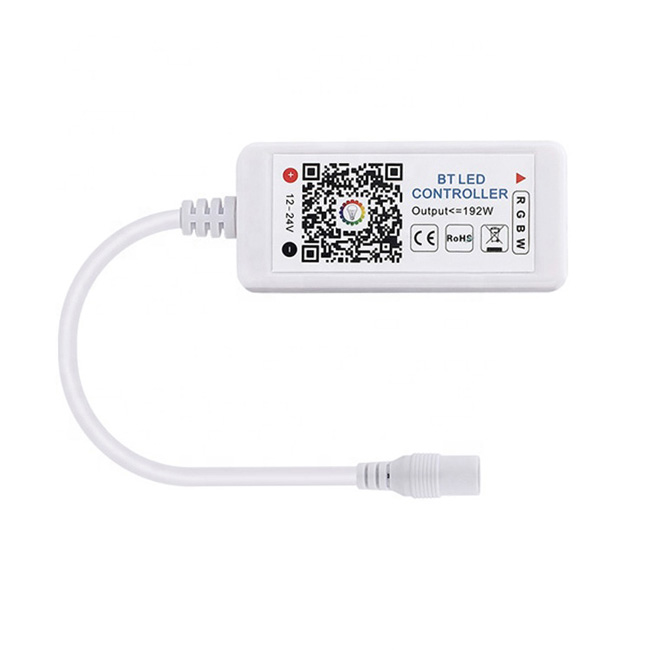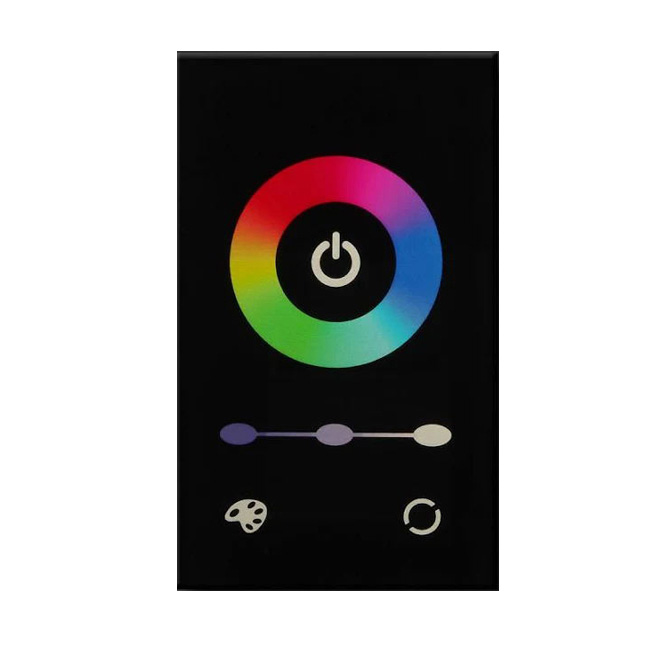 RGB LED ControllerThe RGB LED controller tunes the strengths of three basic colors of red, green, and blue, and mixes them to generate any specific color. Through wired or remote control, the RGB controllers can also manage the color-changing modes, such as strobe, fading, and flash, as well as color-changing order and speed. Certain models can also program, store and retrieve color-changing modes and scenes. The additional functions vary for different RGB light controllers. RGB LED strip controller is installed between the power supply and the LED strip.
As for how to connect RGB LED controllers and install RGB LED strip lights, there are some great articles below.
Different types of RGB LED controllersThere are many types of RGB LED Controllers. We will introduce you some classification standards, the basic characteristics of each type of RGB controller, and the problems you need to pay attention to during installation and use. The knowledge can help you better understand the RGB controller, and make wise decision on buying controllers that suit your needs. 1. The RGB LED controllers are classified into inline RGB controllers and wireless RGB controllers depending on the connection method.
2. Depending on the signal transmission method, RGB LED controllers are divided into several categories, such as IR, RF, WiFi, Bluetooh, DMX, DALI and so on.
IR, RF, WiFi, and Bluetooth RGB LED controllers comparedIR RGB controller requires the transmitter(sender) and receiver to be visible to each other, with no obstacle in the middle. This is because the IR signal cannot pass through the walls, and it cannot control LED light strips in the next room. Therefore, it is necessary to ensure that the receiver, or at least the antenna of the receiver, or can be directly "seen" by the transmitter. The receiver, or at least the part receiving the signal, cannot be hidden. IR can control a range of 30ft (about 10m). RF, WiFi, and Bluetooth RGB controllers don't need to "see" their receivers because the control signals can work through obstacles such as walls. It is therefore possible to control lights in different rooms and the receivers can be hidden for installation. The control range of the RF controller is up to 100 ft (30m), which can basically meet most common projects.It is easy to use, and does not require a network. It is a very common and popular controller at present. Both WiFi and Bluetooth LED controllers can control the lighting with a mobile app, and they are easy to program through software. The WiFi LED controller needs to have a network connection, which can be Internet or Ethernet (LAN). The Bluetooth controller does not require a network. It can communicate directly with the device using a mobile phone. It is suitable for outdoor areas where there is no network, such as cars, RVs, yachts, etc. The following table shows the different types of wireless controllers that are used for different control needs of LED strip lights. It provides a comprehensive comparison in terms of control distance, ability to pass through obstacles, network needed or not, etc  3. Single-zone and multi-zone RGB LED controllers: the difference in the number of controlled zones.
When purchasing, how do you tell if it is a single-zone or multi-zone RGB controller? If an RGB controller does not have a multi-zone control in the label, description, or parameters, it is likely to be a single-zone controller. Because multi-zone controllers typically indicate their multi-zone management capabilities, which is an advanced feature that distinguish itself from the single-zone controller. Difference between RGB and RGBW LED strip controllerThe difference between the RGB LED strip controller and the RGBW LED strip controller is mainly in the number of color channels. Their common color channels are red, green and blue channels. The RGBW LED controller is different in that it has one more channel than the RGB controller, e.g., the white light channel. This additional channel is used to adjust the white LED nodes on the RGBW LED strip. This white light control is used to produce true white light and adds a richer saturation to the other colors of the RGBW LED strip. Since the RGBW LED controller has one more white channel than the RGB LED controller, its power is generally greater than that of the RGB controller. The RGBW controller can be used to control the RGB LED strips. In this situation, only the R, G, and B channels are used, with the white channel of the controller left unused. This is explained in more details in the following sections. The RGB LED controller cannot be used with RGBW strips because it lacks the white light channel and cannot control the white LED nodes on the strip. 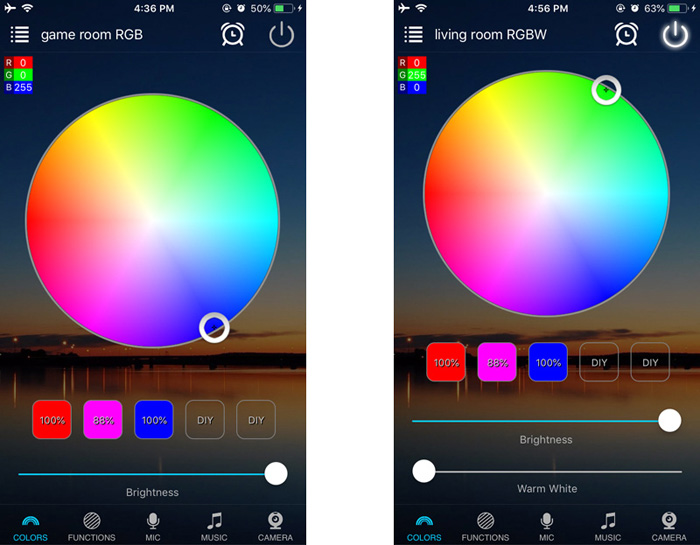 The left picture above shows a mobile application interface of RGB WiFi controller. The app used is called Magic Home Pro for RGB controller. The right picture shows an application interface of RGBW WiFi controller. From the picture, we can see that RGBW LED controller has more control of warm white. Some models also have a separate interface for richer tuning of white light. The following picture shows the interface for controlling warm white of a Bluetooth RGBW controller.  As can be seen in the above picture, the white light adjustment function is more comprehensive. You can adjust the brightness and set the shortcut keys in DIY to quickly retrieve saved scenes. RF Wireless RGB Controller Installation.The RF Wireless RGB controller is a very commonly used type of controller. There are many different ways to install it. Here are some basic installation methods. 1. Wall mount RGB LED controller.Mounting the RF RGB remote control to the wall is a popular and traditional way. The advantage of this method is that you always know where the controller is and there is no worry that you cannot find the controller. The wall mount controller can be powered by wired power supply or by battery. The wall mount controller requiring wired power supply is generally mounted to installation junction box on the wall by screws, and the junction box is usually fixed in the excavated mounting hole. If you already have a junction box in the wall, you can save the work of excavating new holes. Battery-powered wall-mount controllers eliminate the need for power supply and wiring. This type of controller can generally stick to the wall with 3M double-sided tape or strong glue, saving the trouble of opening a hole in the wall. The installation location can also be freely selected to be convenient for users. Of course, there are mounting holes on the back of the controller, which can be screwed to the mounting base, usually a junction box, in the wall. The inconvenience of this battery powered RGB LED controller is that the battery needs to be replaced at certain intervals. Replacing the battery requires disassembling the front panel of the controller, which is not so convenient for some users. In summary, when choosing RF RGB controllers, you need to consider the powering method of RF RGB remote control. If you want to avoid the trouble of replacing the battery later, you need to buy an LED controller using wired power supply. For the elderly, or families with children, wire powered LED controllers are also a good choice to avoid the trouble of finding the remote control. 2. RF wireless RGB LED remote controller.Wireless RGB controller with remote is used to build color changing led strip lights with remote. The advantage of this method is that the installation does not need to open holes in the wall, saving time and labor costs. When using it, you don't need to get up and walk to the wall. You just need to simply pick up the control panel. With the development of controller technology, many receivers can receive the signal of wall mount controller as well as the signal of freestanding remote. Therefore, you can choose to install a wall mount controller, and at the same time equip with a remote to meet the needs of remote control. By this combination, you can control the lighting more convenient, and more comfortably enjoy the beautiful lighting. Wireless remote RGB controller installation combination.1. A remote control is paired with an RGB LED controller. Generally used for small projects, such as installing one or two light strips. 2. A remote controller is paired with multiple RGB controllers. This is often used for medium and large projects, such as multiple LED strips, long distance installations, or multi-zone installations. A remote control pairing multiple RGB LED controllers can have different pairing methods. Here are two scenarios. The first is to remotely control each controller directly. The advantage of this method is that you can control each zone separately. Some models of LED controllers can be automatically synchronized with each other. Controllers that are turned on at different times can also be automatically synchronized, such as for the same change mode and the same speed, as shown below.  The second is the function of some models of controllers, that is, one controller can automatically transmit signals to the next. Such a control combination is that the RF remote remotely controls the first controller, the first controller transmits the signal to the second controller, and so on. The advantage of this method is that the transmission distance can be greatly increased as long as the distance between two adjacent controllers does not exceed 30 m. The disadvantage is that you cannot group control different controllers as in multi-zone operation. 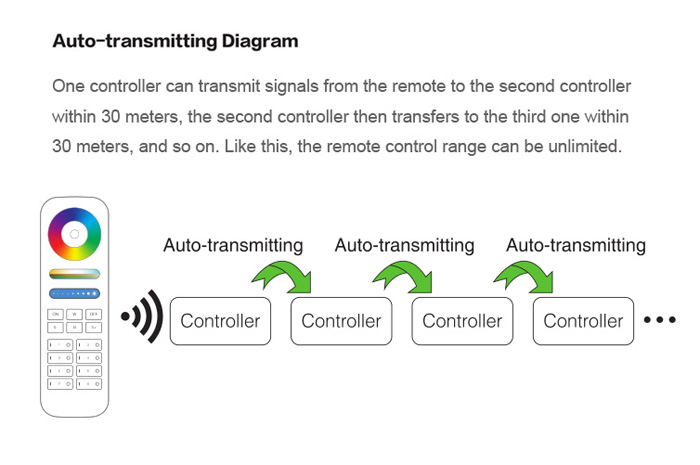 How to connect RGB light strips to RGB LED Controller?The ways to connect RGB LED strips to RGB controllers vary depending on the connection interface of the controllers, the type of leads of the LED strips, and the like. 1. The first scenario is that the RGB LED strip controller has a 4pin connector. This connection varies depending on the leads of the RGB strip. If the leads of the light strip also has a 4pin connector, the 4pin male and female connectors can be simply inserted to connect. If the LED strip has four wire leads, consider connecting the four leads to a 4pin connector and then connecting it to the controller. It is also possible to cut off the controller's 4pin lead connector so that there are 4 wire leads that can be directly connected to the 4pin lead of the light strip. Here we should pay attention, and ensure the correct one-to-one correspondence of the positive and color negative polarities. 2. The second scenario is that the RGB LED strip controller has four connection terminals. The four terminals are generally V+, R(red), G(green), and B(blue). If the LED strip has a 4pin lead, the connection is easy, and just connect the 4pin lead of the strip to the terminals of the RGB LED controller. If the LED strip has a 4pin connector, you can also cut off the RGB controller's 4pin connector so that there are 4 wire leads that can be directly connected to the controller's 4 terminals. 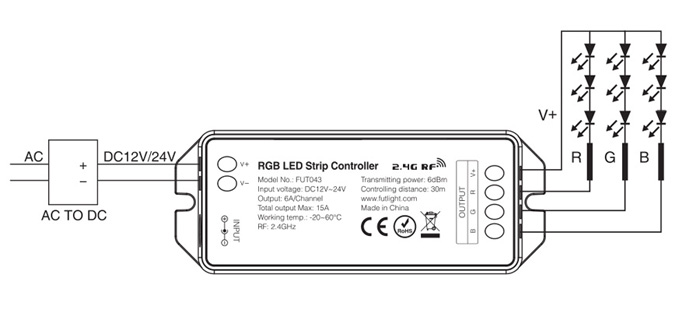 When the RGBW LED controller is used as an RGB LED controller, its wiring is similar to the RGB controller wiring. The only difference is that the white light channel is left unused, as shown below. 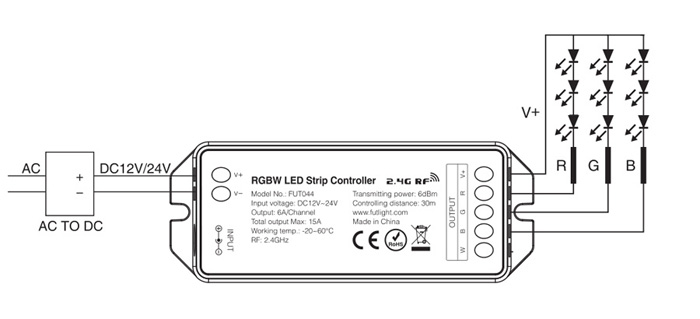 Adjusting the RGB channel sequence of RGB LED controllerThe RGB LED controller with 4pin plug-in fast connectors can have a common issue that is related to the sequence of RGB channels. The sequence of color channels for some brands of RGB controllers does not correspond to the color channel sequence of the LED strips. For example, the color channels of the controller connectors is in the sequence RBG, while the color channels of the LED strip connectors is in the sequence RGB. If you pay close attention to the two sequences, you will find in surprise that the two sequences for color channels do not match correspondingly. The result of this mismatch is that when using the controller to select a specific color, the LED light strip shows another color. When you press the green button to select green color, the light strip may turn out to be on red color lighting. To solve the issue, the color channel sequence need to be adjusted. Some controller apps have this function, which can adjust the color channel sequence of the light strips, so that the color channels of the controller and those of the LED light strips are correctly matched one by one.  How to connect RGB controller to power supply?RGB LED controllers operate with 12V or 24V DC power supply. Most LED strip lights also use 12V or 24V DC power supply. The batteries on vehicles and boats are usually 12Volts. So they are good to provide power for RGB controllers. It is good to remember that because of the power is 12Volts on cars, RVs, yachts and boats, you need choose the 12V LED strip lights for installation on those vehicles. There are two ways to connect RGB LED controller to power supply. Some controllers have DC plug-in terminals. In this case we just need to plug in the male plug of the power supply. If output of the power supply has screw terminals, use LED wires and DC male coaxial connector screw terminal to connect the power supply and DC male connector, then plug the DC male connector into the DC plug-in terminal of the RGB controller. Some RGB LED controllers have screw terminal for wiring. In this case we just need to use LED wire to connect the RGB controller to power supply. Be sure to match the positive and negative on both controller and power supply. There is another common issue worth of attention when installing RGB LED controllers and 12V LED strips on vehicles like cars and RVs. Usually vehicle alternator charges the system battery at 12V. But when starting the engine, the alternator can temporarily charge battery at 13V or 14V, which in turn will cause the RGB LED strip controller to provide 13V or 14V electricity to the 12V light strip. In order to prevent possible damage due to voltage fluctuation, it is recommended placing electric protection before the RGB controller to regulate the fluctuation.
Recommended Reading: |



